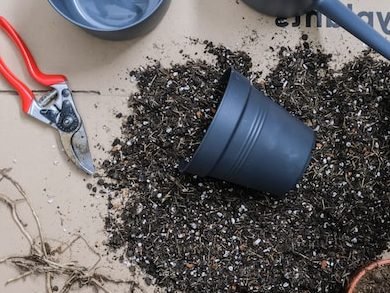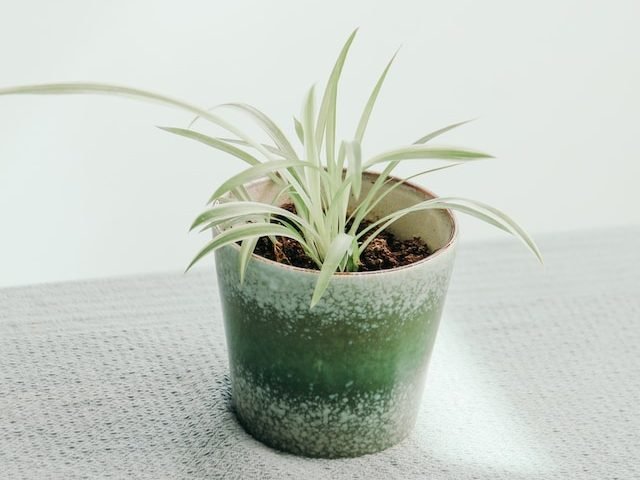
If you have started to notice some signs of unhappiness on your Anthurium Clarinervium and are worried that it might be dying, you have come to the right place. Often we might see brown or yellow leaves, your plant might be losing leaves or drooping down and we might not always know what is causing it and how to revive your plant.
In this article, we will go through the various causes of a dying Anthurium Clarinervium, as well as how to treat the issue and prevent it from causing any more damage in future.
Direct sunlight during summer might be causing issues
As with a lot of things in the houseplant world, too much or too little of something can cause your Anthurium Clarinervium to start developing issues and dying. Too much sunlight is one of those problems because when the sun is intense it can scorch the leaves.
Signs that your ??Anthurium Clarinervium is dying due to sunlight issues are yellow scorched marks on the leaves, faded leaves and if the issues are primarily on the side that is facing the window.
Try to move your plant a little bit further away from the window so that it doesn’t receive any direct sun (the ideal is bright but indirect light). Unfortunately, once the leaves have burnt, there’s no going back so we recommend trimming off the worst affected leaves to encourage new healthy growth and help revive your dying plant.
A dying Anthurium Clarinervium can also suggest overwatering
Overwatering is a very quick killer of Anthurium Clarinervium plants because you will only really notice the issue once it has already rotted through the root system. Although they won’t start dying if you overwater them once in a while if the problem is consistent, you will start to see issues such as yellow leaves, leaf loss, soft stems and black roots.
If you have overwatered your Anthurium Clarinervium it is best to replace the soil straight away rather than just sit and wait for it to dry up over time. This removes the risk that more damage will be done in the days it takes for the potting mix to dry out. You just want to make sure you are careful when removing the soil from the roots as you don’t want to cause any further damage.
To prevent the issue in the long term, make sure to check the moisture in the soil before you water your Anthurium Clarinervium. There are two really easy ways to make sure that it definitely needs water.
First check the moisture at the top of the soil, if it is still damp then wait a few days before watering again. However, to be more accurate we recommend using a moisture meter moving forward so that you can track how long it takes for the potting mix to dry out so that you aren’t watering again too soon.
Underwatering can also cause problems for your Anthurium Clarinervium
Another common reason that might explain why your Anthurium Clarinervium is dying is a lack of water. This will be a slower issue to develop than overwatering and your plant will be fine if you just forget to water them every once in a while but will start to develop problems after not getting any moisture for weeks and months on end.
The most common signs of an underwatered Anthurium Clarinervium are dry leaves, light brown spots on the leaves, crispy leaves and drooping stems.
Before you start watering your plant more frequently, it’s important to be sure that underwatering is the cause of your dying plant. Take your plant out of its pot to see how dry the potting mix feels. If it is dry and powdery and the roots have maybe even started to crisp up, then your Anthurium Clarinervium is likely dying due to underwatering.
Your first instinct to reverse this and revive your dying plant might be to drown your Anthurium Clarinervium to make up for the lack of water, but this can actually cause more damage and shock your plant.
Instead, we recommend watering your plant a little bit once a day for a full week. This will help to moisten the soil without shocking the plant (which can happen if their environment changes suddenly). A moisture meter can help with knowing when to water so we recommend investing in one of those to keep track of when to water moving forward.
Cold temperatures can kill your Anthurium Clarinervium
Another reason that your Anthurium Clarinervium might be dying is cold temperatures. Native to the tropics, Anthurium Clarinerviums thrive in warm humid environments. If there is a slight cold draft coming through the door or window or your plant is too close to an air conditioning vent, then this can start to cause real issues over time.
Diagnosing temperature extremes is pretty easy as you just need to buy a small digital thermometer that you can place next to your plant to check for any fluctuations throughout the day and night.
To solve the issue of cold temperatures and prevent your plant from dying, draft-proof any doors or windows that are close to your plant or move them into a slightly warmer room in your home. It may take a little time for your plant to adjust so don’t expect it to instantly recover.
A dying Anthurium Clarinervium can also suggest low humidity levels
A humid environment is vital for a healthy Anthurium Clarinervium and they can really struggle if your home has dry air. This happens during winter a lot more as the heating and lack of ventilation will lead to much drier air. If the leaves have begun to go a little dry from the tips and edges inward or are curling inwards then a lack of humidity may be the problem.
Luckily there are quite a few different ways that you can lift the humidity level for your dying Anthurium Clarinervium and get it back to full health.
Mist the leaves
This is the main one that we recommend getting into the habit for all of your humidity-loving houseplants as it’s a great way to keep a nice steady level and prevent your plant from dying. Use a spray bottle to mist the leaves a few times a week.
Use a pebble tray
This requires a little DIY but it’s a great solution to solving dry air. Fill up a tray with small stones and fill it up halfway with water. Place your plant over the top and over the course of the day the water will evaporate under your plant. One thing to make sure of with this method is that your plant isn’t sitting in the water as this will cause root rot.
Change your plant’s placement
If you have good lighting in your kitchen or bathroom then we recommend moving your dying Anthurium Clarinervium in there. The natural humidity from showering and cooking makes them a great spot for your plant and means you don’t even have to remember to do anything!
Invest in a humidifier
These affordable little devices keep the humidity in the room at a consistent level so are great for houseplants that suffer from brown leaf tips easily. The great thing about humidifiers is that they literally do all of the work for you so are great for busy or forgetful plant parents.
A dying Anthurium Clarinervium could be a worrying sign of pests
Whilst rarer than some of the other reasons, your Anthurium Clarinervium might be dying due to a pest infestation. They can be susceptible to gnats, mealybugs and scale insects and the likelihood is often higher if your plant is spending some of the year outside. They suck on the plant’s leaves which damages them and leaves behind yellow patches and holes.
Check over your plant for visible pests or signs of pests (brown or yellow spots, holes in the leaves or white webbing/powder across the stems). Once diagnosed, move your infected plant away from all other houseplants and check your other plants over just in case.
To revive your dying Anthurium Clarinervium, remove the worst affected leaves, wipe down the rest of the leaves and flush the soil out in the shower. This should initially curb the size of the infestation and make it easier to get rid of. Then treat with insecticide and neem oil.
Those are the most common reasons why your Anthurium Clarinervium is dying. It’s important to go through each of them whilst inspecting your plant and its potting mix so that you can eliminate factors that don’t apply and hopefully make the right diagnosis. Then once you have made changes to either the environment or your care routine, keep a close eye on your plant to make sure that things are moving in the right direction.
To learn more about caring for your plant and preventing more common issues from arising, check out our Anthurium Clarinervium care guide.















